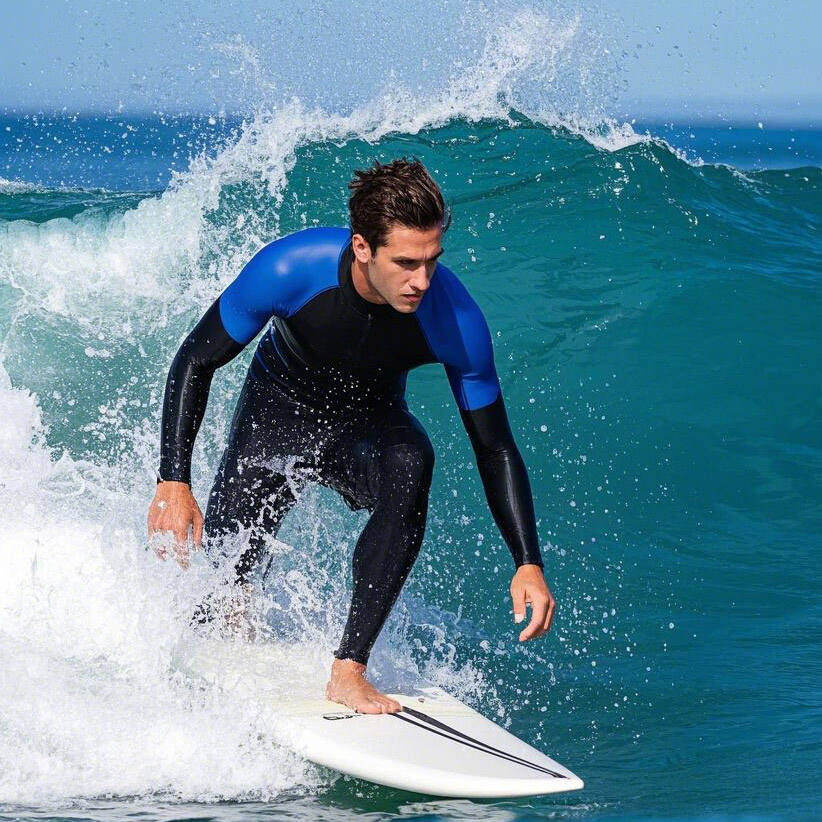
För vattensportentusiaster, oavsett om du sysslar med dykning, simning eller surfing, är det avgörande att välja rätt utrustning. En våtdräkt är en av de viktigaste delarna av utrustningen, eftersom den ger både värme och komfort samt säkerställer rörlighet under rörelse. I denna guide kommer vi att gå igenom allt du behöver veta om våtdräkter och lyfta fram några viktiga detaljer att överväga när du väljer rätt dräkt.
Vad är en Våtdräkt?
En våtdräkt är en typ av klädsel som är konstruerad för undervattensaktiviteter och är vanligtvis tillverkad av syntetiska material såsom neopren. Dessa material har utmärkta isolerande egenskaper, vilket hindrar vattnet från att kyla ner din kropp och säkerställer att du stannar varm under vattensporter. Oavsett om du dyker i kalla vatten eller bedriver andra vattensporter under kallare förhållanden är en våtdräkt nödvändig för skydd.
Huvudfördelar med Våtdräkter
-
Isolering
Den främsta fördelen med en våtdräkt är dess utmärkta isolering. Även i iskallt vatten hjälper en våtdräkt till att behålla din kroppstemperatur och förhindrar hypotermi eller obehag orsakat av kalltvattenexponering.
-
Bekvämlighet och flexibilitet
Även om våtdräkter är tillverkade av tjockare material, betonar moderna design komfort och rörlighet, vilket säkerställer att du kan röra dig fritt under vattenaktiviteter. Högelastisk neopren möjliggör större rörelsefrihet och obegränsad rörelse.
-
Skydd
Förutom isolering ger våtdräkter skydd mot marint liv, såsom maneterstick eller skarpa koraller, samt skyddar kroppen mot påsar från stenar och andra hinder under vattenytan.
-
UV-skydd
Vissa våtdräkter är utrustade med UV-skydd som ger ytterligare skydd mot solljus och hjälper till att förebygga hudskador.
Typer av våtdräkter
Våtdräkter finns i olika modeller och tjocklekar, beroende på vattnets temperatur och typ av aktivitet. Här är de vanligaste kategorierna:
-
Helvåtdräkt : Lämplig för kallare vattenmiljöer, denna typ av neoprenklädnad täcker hela kroppen och erbjuder omfattande skydd.
-
Neoprenklädnader med korta/långa ärmar : Ideala för varmare vatten, dessa dräkter erbjuder större rörlighet och används vanligtvis när vattnets temperatur är måttligt kall.
-
Neoprenvästar : Bäst för varmare vatten, dessa västar fokuserar på att ge skydd för kroppens centrala delar och ger också extra flytförmåga.
-
Spearfishing våtdräkter : Särskilt utformade för pildykning, dessa dräkter erbjuder ökad slitstyrka och skydd mot undervattensfaror, såsom skarpa klippor och marint liv, vilket gör dem idealiska för de krävande förhållandena vid pildykning.
-
Torkdräkt : Till skillnad från traditionella neoprenklädnader erbjuder torkdräkter fullständigt vattentät skydd och håller personen helt torr, även i extremt kalla vatten. De är nödvändiga för aktiviteter i frusna vattentemperaturer, såsom isdykning.
Hur man väljer rätt neoprenklädnad?
När du väljer en neoprenklädnad bör du ta hänsyn till följande faktorer:
-
Vattentemperatur : Vattentemperaturen påverkar direkt våtdräkts tjocklek. För kallt vatten krävs en tjockare dräkt, medan varmare vatten tillåter tunnare alternativ.
-
Aktivitetstyp : Olika vattensporter kräver specifika våtdräktsfunktioner. Till exempel kan simning behöva ett mer flexibelt design, medan dykning fokuserar på termisk isolering.
-
Personlig komfort : En välpassande våtdräkt förbättrar komfort och rörlighet, och förhindrar att vatten sipprar in och orsakar obehag eller kyla.
Slutsats
Oavsett om du är en erfaren dykare eller nybörjare inom vattensporter, kan valet av rätt neoprenklädsel avsevärt förbättra din upplevelse och hålla dig bekväm och säker. Om du söker skräddarsydda neoprenklädslar eller annan utrustning för vattensporter erbjuder vi B2B-skräddarsyrjänster. Som en professionell tillverkare erbjuder vi högkvalitativa neoprenklädslar, livvästar, rash guards och andra produkter till återförsäljare och varumärken världen över. Om du har några OEM/ODM-krav, tveka inte att kontakta oss och utforska de olika skräddarsyralternativ som vi erbjuder!
